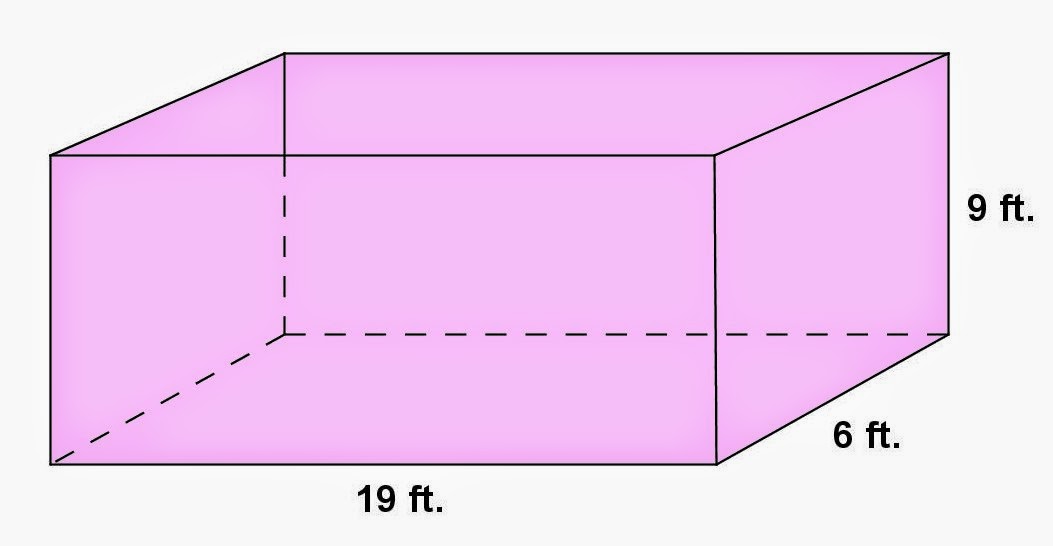"Published in Vacaville, California, USA"
Counting 38 cu. ft. of coal to a ton, how many tons will a coal bin 19 ft. long, 6 ft. wide, and 9 ft. deep contain, when level full?
Solution:
To illustrate the problem, it is better to draw the figure as follows
 |
| Photo by Math Principles in Everyday Life |
The volume of a rectangular parallelepiped is given by the formula
Substitute the values of length, width, and height of a bin, we have
The density of a substance is given by the formula
where ρ is the density, W is the weight, and V is the volume of a substance respectively.
Therefore, the weight of a coal in a bin is



















































